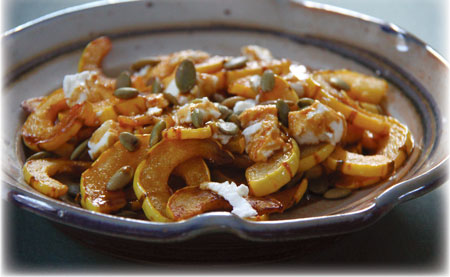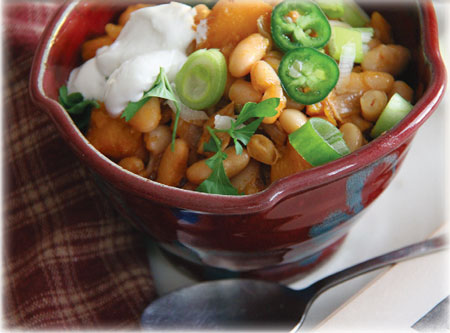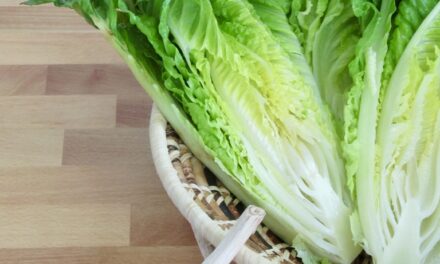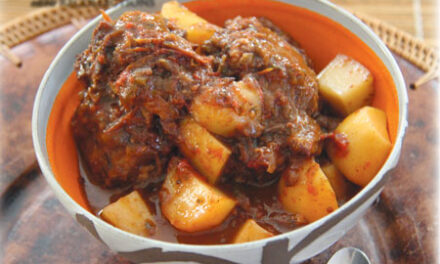By Katie Callahan.

When you’re ready to use your stored veggies, try these simple recipes to give those winter crops the respect they deserve.
Our seasonal New England climate means that most of us hang up our shovels and rakes, coil up the hose, and put away our gardening gloves for the winter (and, if you’re like me, immediately begin plotting out next year’s garden). But if you’re not quite ready to give up the bounty of summer, there are many ways to keep the growing season–or at least the season’s harvest–going well into the colder months. I personally love “putting up” vegetables from my garden and fruits from local farmers’ markets. From dilly beans and tomato sauce to numerous pickles, relishes, and–my personal favorite–hot pepper jelly, my cupboards are always well-stocked with summer goodies to enjoy all through the fall and winter. Recently, I’ve been putting real effort into finding the best methods to extend the shelf life of the produce available during the winter months.
If you are lucky enough to have a greenhouse, you can keep right on growing your hardier vegetables throughout the winter even without a heat source, although not with the same vigor as the summertime season. The warmth of the sunlight trapped in the greenhouse should be enough to protect fall-planted squash; root vegetables like beets, carrots, and parsnips; and cold-hardy greens like kale, collards, and Swiss chard. If you are a raised bed gardener, you can convert all of your beds into miniature temporary greenhouses by attaching PVC pipes, secured to the sides with metal brackets, in an arc over the bed, and then covering the frame with plastic sheeting.
Whether you embark on the journey of growing your own winter crops or choose to visit winter markets to buy your produce, proper storage is important. One of the simplest ways to store winter produce is in sand or sawdust. While this can be done in the crisper drawer of your refrigerator, I’m not big on the idea of filling my fridge with sand and will use a wooden or cardboard box kept in my garage; a backyard shed, dry basement, or even a free kitchen drawer. Don’t bother washing your produce before storage; though make sure to give it a good scrubbing before use. Cut off any greens (use to make some pesto or sauté with garlic and olive oil for a quick side dish) and store the root part. Vegetables like carrots, parsnips, and beets can all be stored vertically, just like they grow, to help maximize space; be sure all of the vegetables have at least 1/2 inch of space between them to allow for proper air circulation. Also, make sure everything is completely covered, and then you’re good to go! Most vegetables should keep up to six months with this method…plenty of time to get you through the dreary winter months.
When you’re ready to use your stored veggies, try these simple recipes to give those winter crops the respect they deserve.
Roasted Delicata Squash with Pomegranate Molasses, Pumpkin Seeds and Goat Cheese

Wheel-thrown stoneware plate made by Wayne Fuerst of Westport, MA. Available at Local Pottery, Norwell MA
Don’t steer clear of this recipe just because your grocery store doesn’t stock pomegranate molasses; try using 2 tablespoons of maple syrup stirred with 1 tablespoon of pomegranate juice instead.
- 3 delicata squash
- ¼ cup olive oil
- salt, freshly ground pepper, cayenne pepper, to taste
- 2 tablespoons pomegranate molasses (see headnote)
- ⅓ cup crumbled goat cheese
- ¼ cup toasted pumpkin seeds
Preheat oven to 400 degrees.
Cut the squash in half lengthwise and seed. Slice into ½-inch C-shapes. Toss with extra-virgin olive oil and sprinkle with salt and pepper and cayenne pepper. Spread onto a baking sheet and bake for 10 to 15 minutes, until the squash starts to get golden brown, but not so soft that it loses its shape. Transfer the squash to a serving platter and drizzle with pomegranate molasses. Sprinkle the goat cheese and pumpkin seeds over the squash. Serves 8 as a side dish.
White Chili with Chicken and Winter Squash

Wheel-thrown stoneware red bowl made by Wayne Fuerst of Westport, MA. Available at Local Pottery, Norwell MA
A tasty way to eat any favorite winter squash. Just scrub, halve, and scrape the seeds out of delicata or acorn before chopping; peel butternut, kabocha, red kuri, or hubbard squash first. For deeper flavor, try using the simmered remains of a roast chicken or turkey instead of the chicken breast and broth called for. If you opt for using dry beans, just soak a few hours in plenty of cold water and cook on low until tender. Salt to taste.
- ½ cup olive oil
- 1 pound skinless chicken breasts or thighs, cut into ½-inch chunks
- 1-3 minced jalapenos (include the ribs and seeds if you like extra heat)
- 3 cups cubed winter squash (see headnote)
- 1 onion, chopped
- 3 cloves garlic, minced
- 1 pound dry cannellini beans (see headnote), or 2 cans of beans
- 3 cups chicken broth
- 1 tablespoon chili powder
- 2 teaspoons cumin
- 1-2 teaspoons New Mexico chile powder or smoked paprika
- 1 teaspoon coriander
- salt and pepper
Optional garnishes:
- sour cream, minced scallion, cilantro, jalapeno
Heat olive oil in a Dutch oven or large pot on medium-high heat. Add the onion and cook a few minutes, or until soft. Add the garlic and jalapeno and cook for a minute, then add the chicken and squash and continue to cook until the chicken is browned on all sides and the squash begins to soften. Stirring constantly, add the spices and cook until aromas are released.
Stir in the broth, cover and cook until the squash is fully tender, 20 to 30 minutes. Uncover and stir in the beans. Cook uncovered for another 15 minutes, until the squash just starts to break down, stirring frequently, until chili is thickened slightly.
Serve with optional garnishes, as desired.
Serves 8.
Katie Callahan is a chef, avid gardener, and writer. She loves the challenge that New England winters present for staying seasonal with cooking and finds joy in using foods put up from the summer garden as well as finding new and inventive ways to use winter produce.






